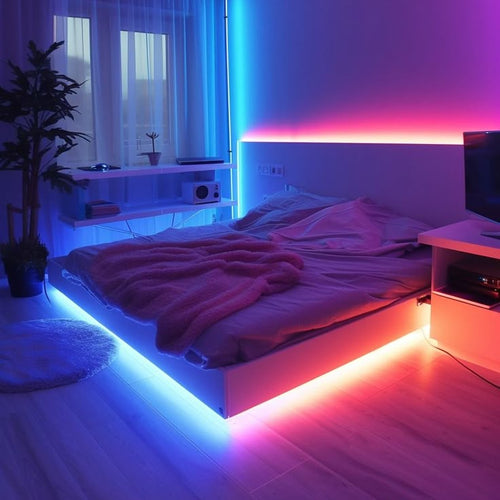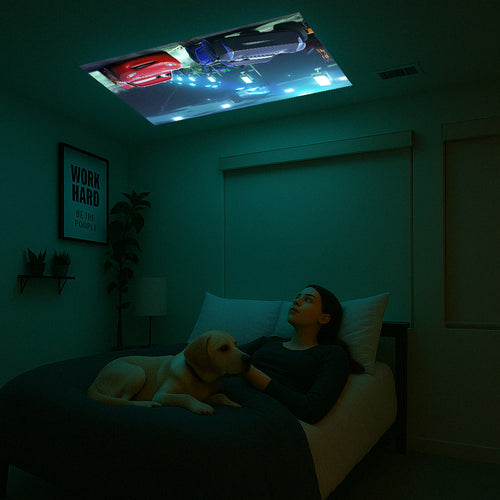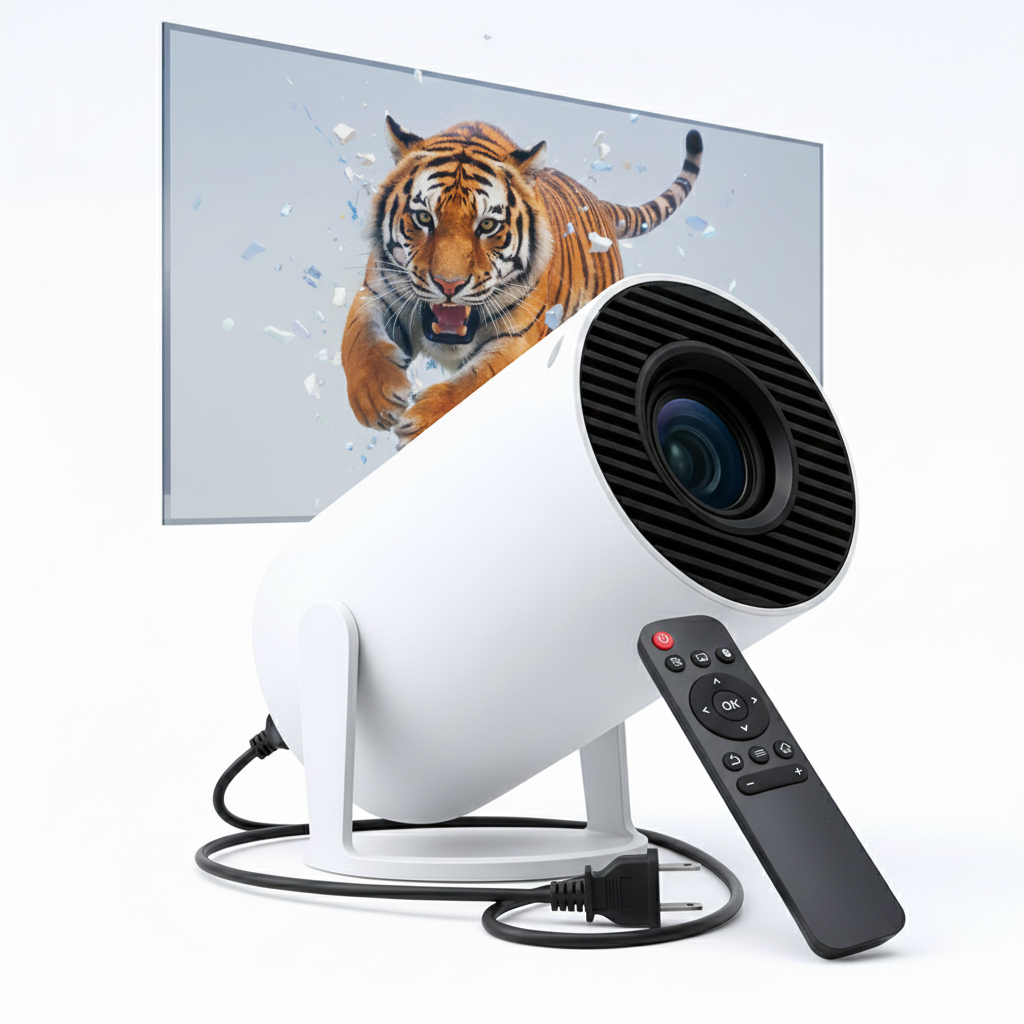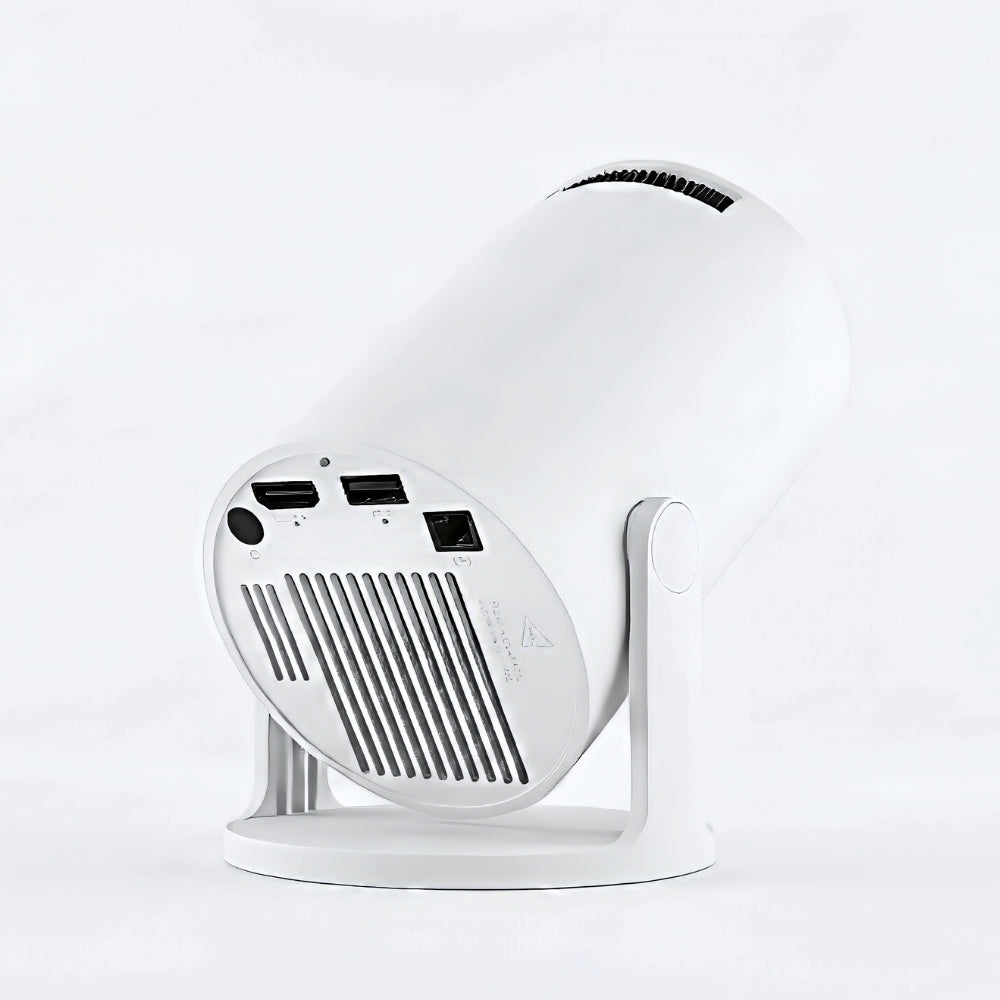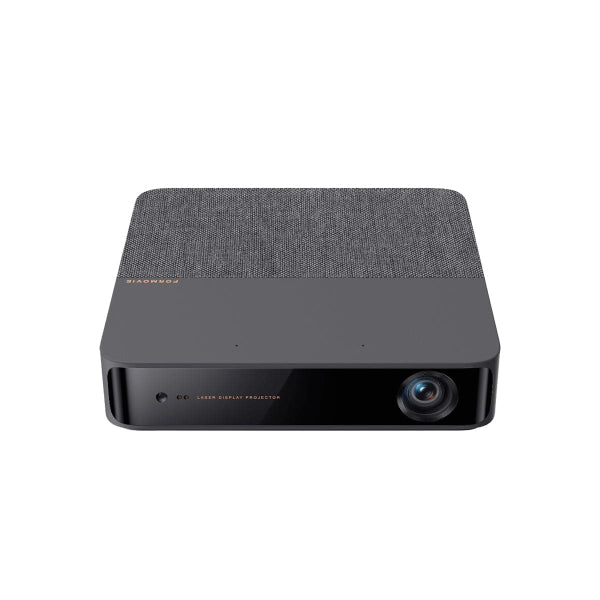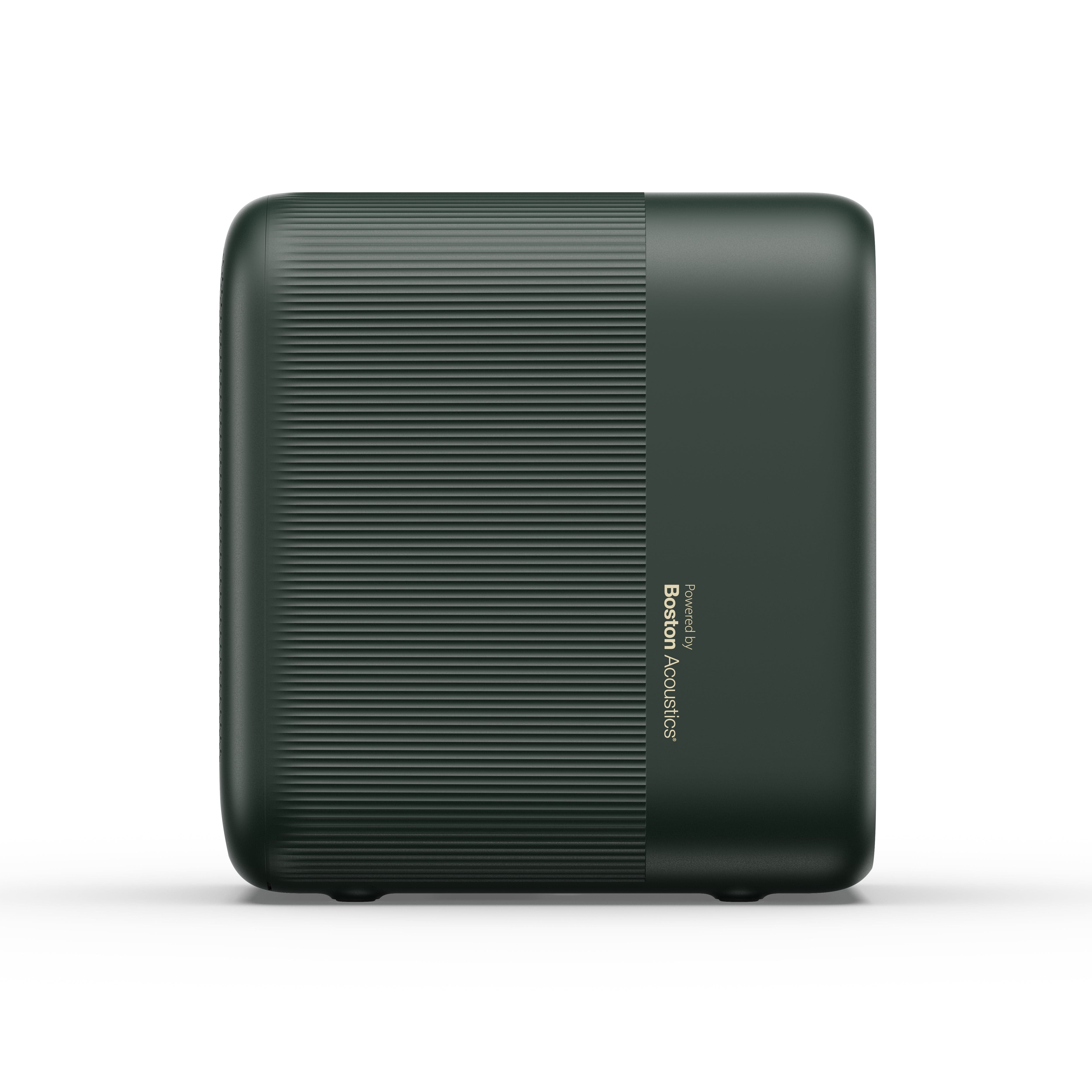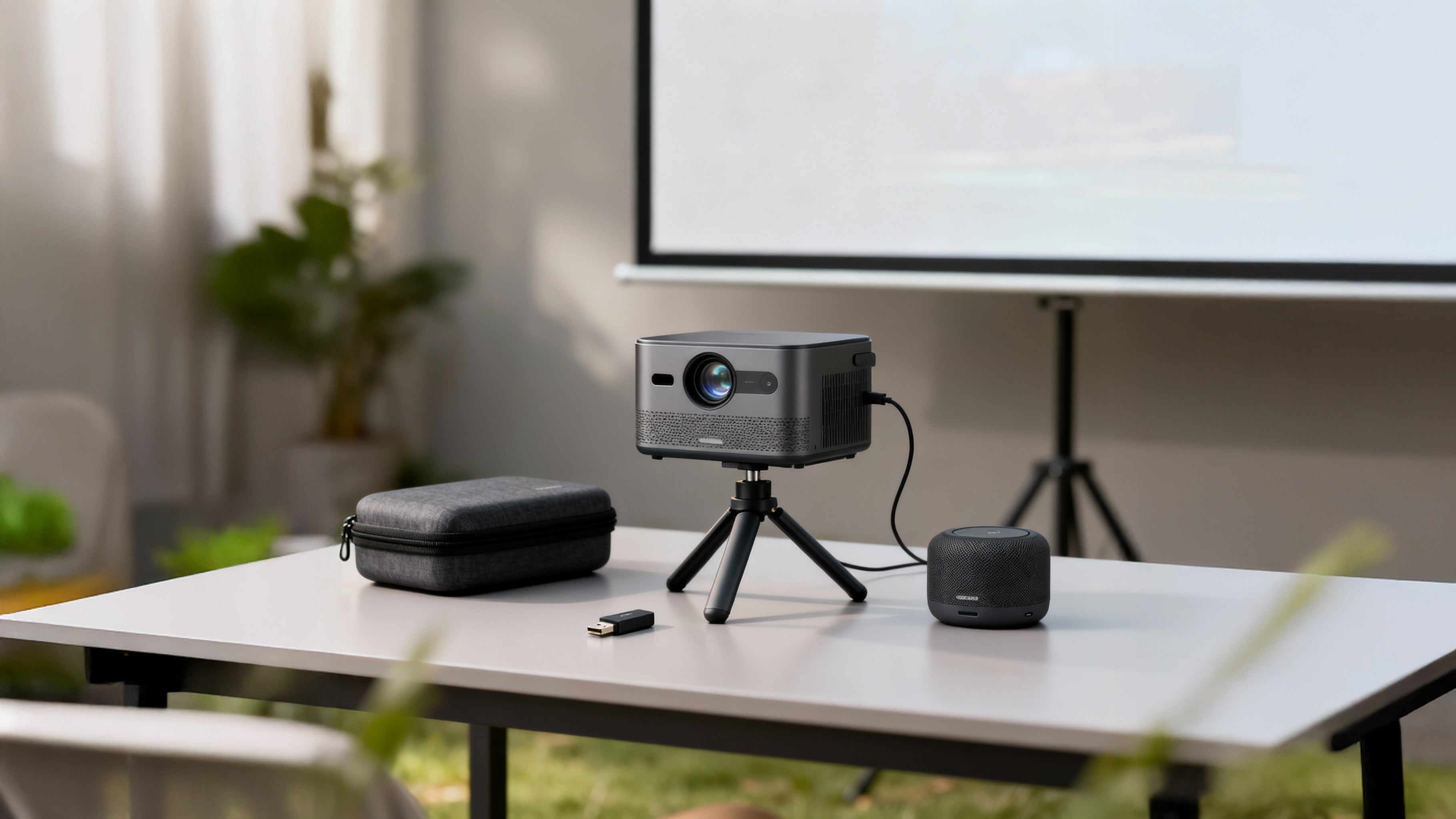Understanding projector technology can greatly enhance your viewing and buying experience. When you know what makes each projector unique, you’ll be better equipped to choose the ideal model for your needs.
Projectors have a fascinating history that spans over 350 years, evolving from early film-based devices to today’s advanced digital systems. Modern technology has introduced several types of projectors, including Digital Light Processing (DLP), Liquid Crystal Display (LCD), and Liquid Crystal on Silicon (LCoS) projectors.
Key aspects such as lamp source technology, imaging systems, lens design, color processing, power efficiency, and cooling all play important roles in determining a projector’s performance.
What Is A Projector?
A projector is an optical device that displays images or videos onto a surface, most commonly a screen or a wall by directing light through a lens system. The image source may come from film (traditional film reels), slides (projects slides taken from various film cameras, most commonly 35mm) or digital media (digital projectors or smart displays, most commonly used today), depending on the projector’s design.

Projectors are used in a wide range of environments such as home theaters for cinematic movie experiences, business meetings and classrooms for presentations, cinemas for large-scale film projection, portable methods such as outdoor movie nights or outdoor entertainment.
What are the core components of a projector?
Since the invention of the first projection devices over 350 years ago, technology has evolved dramatically. Early projectors relied on lamps (high-intensity light sources) and physical film strips (physical reels of transparent photographic film containing sequential still images, or frames, that, when projected, create moving pictures), while today's projectors harness advanced light sources such as Light Emitting Diode (LED) and laser.
Complex imaging technologies like DLP (invented by Texas Instruments in 1987), LCD (invented by Gene Dolgoff in 1984) and LCoS were then invented. These advancements have enabled projectors to become brighter, more portable and capable of delivering sharper images than ever before.
What is Light Source Technology?
Light source technology produces the illumination necessary to display images on a screen. The type of light source greatly influences brightness, color accuracy, energy efficiency, and overall longevity. The types of light sources are given below:
- Lamp (Traditional Bulbs): Lamp-based light sources utilises technologies such as halogen, metal halide, and Ultra High Performance (UHP) lamps. These traditional bulbs deliver strong brightness, but their limited lifespan and tendency to generate significant heat necessitate periodic replacement. Lamp projectors are suited to classrooms, business meeting rooms, and traditional home theaters where strong brightness is needed.
-
LED (Light Emitting Diode): LEDs are more commonly used in modern compact and mini projectors due to their energy efficiency, longer lifespan, stable and consistent color output, and their compact size and low heat generation. However, their peak brightness may be slightly lower than that of advanced lamp or laser models. LED projectors are ideal for portable use, casual home entertainment, and on-the-go presentations.
- Laser: Laser projection represents the latest advancement in the industry, employing laser diodes to deliver extremely bright, stable illumination and outstanding color accuracy. Laser projector technology is a top choice for high-end home theaters, business settings, and large event spaces.
Imaging Technology
Imaging technology is responsible for forming the actual image before it reaches the screen. While the light source creates brightness, it's the imaging system that determines the sharpness, color accuracy, and overall quality of the projected visuals.
- DLP (Digital Light Processing): This technology uses a specialised chip called a Digital Micromirror Device (DMD), which contains thousands or millions of tiny mirrors. These mirrors tilt rapidly to direct light, forming sharp digital images projected onto the screen.
- LCD (Liquid Crystal Display): LCD projectors use one or more panels filled with liquid crystals. By controlling the position of these crystals, the projector precisely modulates light to create full-color images as it passes through red, green and blue filters.
- LCoS (Liquid Crystal on Silicon): LCoS blends elements of both DLP and LCD. It uses liquid crystals applied to a reflective silicon surface, resulting in very high contrast ratios and smooth detailed images often preferred for demanding home theater setups.
These are the technology used to determine the different types of projectors. Here at The Projection Room, we only sell DLP projectors and LCD projectors.
How Projectors Form an Image
Projectors create images through a precise combination of light generation, image formation, and optical projection, but the exact process varies depending on the technology used, whether it is lamp-based projectors, DLP projectors or LCD projectors.
Generally the process begins with the light source, which produces a powerful beam of illumination, This light is then directed into the imaging system such as DLP chip, LCD panel, or LCoS Layer. The picture itself is then formed.
Within the imaging system, electronic signals sent from the media player or computer are translated into patterns of light. These patterns are modulated to control color, brightness, and detail, resulting in a crisp visual representation of the input content. The modulated lightt then passes through a specialised lens system, which focuses and enlarges the formed image onto a screen or wall.

Some projectors may use additional color wheels or prisms, to further refined the reproduction of hues and tones. In every projector, this sequence, light generation, imaging, color processing, and lens projection works together to ensure that movies, presentations, or photos are displayed with clarity and vibrancy for viewers.
Types of Projectors
Projectors have evolved into diverse categories each designed to suit different environments, applications, and user needs. Whether you're looking for immersive movies at home, smooth business presentations, stunning cinema visuals, or portable entertainment, there's a projector tailored for every scenario. The types of projectors are:
Home Theater Projectors
Home theater projectors are designed for home movie watching and gaming, these projectors offer high resolution, rich colors, and deep contrast for a true cinematic experience. Best used in dark or controlled lighting environments.
Business Projectors
Business projectors are built for presentations in offices, classrooms, or meeting rooms, business projectors feature reliable brightness, easy connectivity, and quick setup. They perform well in spaces with ambient light and support common inputs like HDMI and USB.
Portable Projectors
Portable projectors are compact and lightweight, portable projectors are ideal for travel, outdoor events, or flexible use around home. Many portable projectors are different than your normal projectors as portable projectors often feature built-in batteries and wireless connectivity, sacrificing a bit of brightness for maximum convenience.
Cinema Projectors
Cinema projectors are used in commercial theaters or large venues, cinema projectors are engineered for huge screens, powerful brightness, and accurate color reproduction. They often support advanced formats like 4K or even higher resolutions.
Mini Projectors
Mini projectors are even smaller than standard portable models, mini projectors are designed for quick, casual entertainment on the go. They typically use efficient LED light sources and fit easily in a bag or pocket.
Ultra Short Throw Projectors
Ultra Short Throw projectors (UST projectors) are specialised devices that project large images from just inches away from the screen or wall. They're perfect for tight spaces and eliminate the need for a long throw distance.
Pico Projectors
Pico Projectors are the smallest category, pico projectors are pocket-sized units that excel at impromptu presentations or sharing videos anywhere. They usually operate on battery power and are controlled with smartphones or mobile devices.
Key Specifications to Understand
When buying a projector, understanding the most important specifications can help you find the model that best fits your needs and space. Here are the key specs to consider:
- Brightness (Lumens): Brightness are measured in lumens (or ANSI lumens) brightness determines how well a projector's image stands out, especially in rooms with ambient light. Home theater projectors typically range from 1500-3000 lumens while business and cinema models may exceed 5000 for use in well-lit spaces or on large screens.
- Resolution: A projector's resolutions (such as 720p HD, 1080p Full HD, or 4K Ultra HD) indicates the amount of detail and clarity in the projected image. Higher resolutions create sharper visuals, which are vital for movies, gaming, and presentations with small text or fine graphics.
- Contrast Ratio: This spec compares the brightest whites to the darkest blacks a projector can produce. A higher contrast ratio means richer colors and deeper blacks, which is especially important for cinematic viewing and photos.
- Throw Distance & Throw Ratio: Throw distance is the space between the projector and the screen. Throw ratio refers to how wide an image the projector creates at a given distance. Knowing these helps you select the right projector for your room size so you get the desired image size without distortion.
- Connectivity options: Most modern projectors include HDMI, USB, VGA, and sometimes wireless connectivity (Wi-Fi/Bluetooth) to support laptops, media players, smartphones, and streaming devices. Consider what devices you want to use to ensure compatibility.
- Lamp or Light Source Life: The lifespan of the projector's lamp, LED, or laser is important for long-term ownership. LEDs and lasers may last over 20,000 hours, while traditional lamps may need replacement after 2,000-5,000 hours.
- Speaker & Audio: Many modern projectors include built-in speakers but for a true home theater experience, external sound systems are often preferable.
Common Problems and Maintenance Tips
While projectors offer impressive visuals, they also encounter issues over time. Understanding typical problems and practicing basic projector maintenance and projector care can extend your projector's life and keep images sharp. Here are some issues you might encounter
Lamp and Light Source Replacement: Traditional lamp projectors need bulb replacements every few thousand hours. Dimming brightness or sudden shutdowns often mean the lamp is near the end of its lifespan. Follow manufacturer instructions when changing bulbs, and always allow the projector to cool before handling.
Overheating: Projectors can generate significant heat, especially in compact or high-powered models. Overheating can lead to sudden shutdowns or damage. Enusre your projector has plenty of ventilation and routinely clean dust from vents and air filters if applicable.
Image Quality Issues: Blurry visuals, faded colors, or uneven brightness may result from dirty lenses, old lamps, or improper positioning. Clean lenses gently with a microfiber cloth. Replace light sources as recommended to maintain color and clarity.
Dust and Debris: Dust can build up inside, lowering image quality and clogging cooling systems. Use compressed air or a soft brush to remove dust from vents, fans, and filters regularly.
Connectivity problems: If a projector fails to recognise a connected device, inspect cables, inputs, and settings. Update firmware when available, and restart both devices to resolve most issues.
Regular cleaning, proper use, and timely part replacements will maximise performance and reliability to ensure your projector provides bright, clear images for years to come.
FAQs
Are laser projectors and LED Projectors a sub group of LCD/DLP/ LCoS?
No, Laser projectors and LED projectors are not a separate subgroup of LCD, DLP or LCoS Projectors. Instead, they describe the light source within a projector. The fundamental imaging technology of a projector (LCD, DLP, LCoS) determines how the image is created, while the light source could be lamp, LED or Laser.
Are Mini Projector Brands like Formovie Projectors LCD/DLP/LCoS?
Formovie Projectors use DLP imaging technology combined with a laser source. Specifically, they feature triple laser light source technology called ALPD (Advanced Laser Phosphor Display). RGB +4.0, which provides high brightness, wide color gamut, and good contrast. The DLP technology in Formovie projectors uses a Digital Micromirror Device (DMD) chip to create image, while the laser serves as the Illumination method
What type of projector is best for different uses?
For home theaters, projectors with high resolution and contrast, such as LCD, LCoS, or laser-based models are ideal for immersive omvies and gaming. Business and classroom presentations benefit from portable or lamp-based projectors with strong brightness and versatile connectivity. Mini and pico projectors are perfect for travel and casual entertainment. Cinema projectors, with advanced light sources and specialised imaging technology, suit large venues.
Can a projector’s brightness be too high or too low for certain environments?
Yes. Too low brightness results in faded, hard-to-see images, especially in rooms with ambient light. Excessively high brightness can wash out colors or cause eye strain in dark environments. Match your projector's lumens to your space: higher lumens for bigger screens and brighter rooms, lower lumens for small, dim settings.
What should I consider when setting up a projector screen?
Ensure the screen is positioned flat and perpendicular to the projector to prevent distortion, although many modern projectors have built in auto keystone systems to prevent this. Choose a screen size appropriate for your projector's throw distance and resolution, and select a surface with suitable gain to optimise image brightness and clarity. Minimise ambient light for home theaters, and use blackout curtains if needed to maintain image quality.


